Consider relating the roof forms of the new building to those found in similar, good quality buildings in the neighborhood or region. Avoid introducing roof shapes, pitches, materials or colors not found in the neighborhood or region.
Images and Captions:
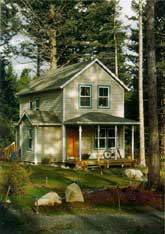
The shape, pitch and edge detailing of the roofs on this Washington state home borrow heavily from successful traditional roof styles in the region.
(OPAL Commons)
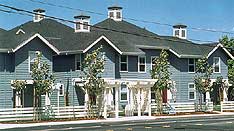
Although this is a large building, the roof expanse has been broken down into a series of smaller roofs, giving the housing the look of the larger, primarily older, homes in the surrounding area.
(Tower Apartments)
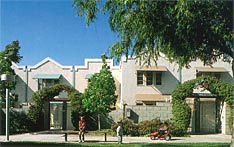
The flat roofs of this Los Angeles housing reflect a style common throughout the dry southwestern region.
(Willowbrook Green Apartments)
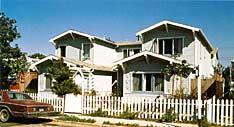
The shape, pitch and edge detailing of the roofs on this multi-family housing resemble those of single-family homes in the surrounding neighborhood.
(Ocean Park Co-op)
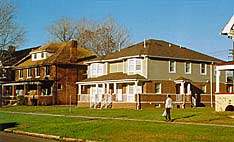
The large roofs on this Detroit quadruplex clearly helps to relate the form to its neighbors.
(Field Street)
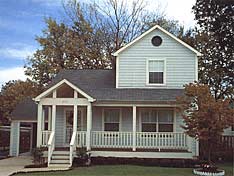
The simple roof forms of this Chattanooga house echo the "Tennessee bungalows" common to the area.
(Orchard Village and Oak Hill)
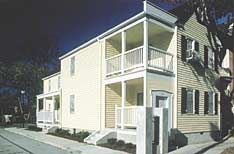
Steep roofs over the main living area leading to more shallow roofs over balconies reflect the historical style found throughout Charleston, South Carolina.
(Charleston Infill Housing)
